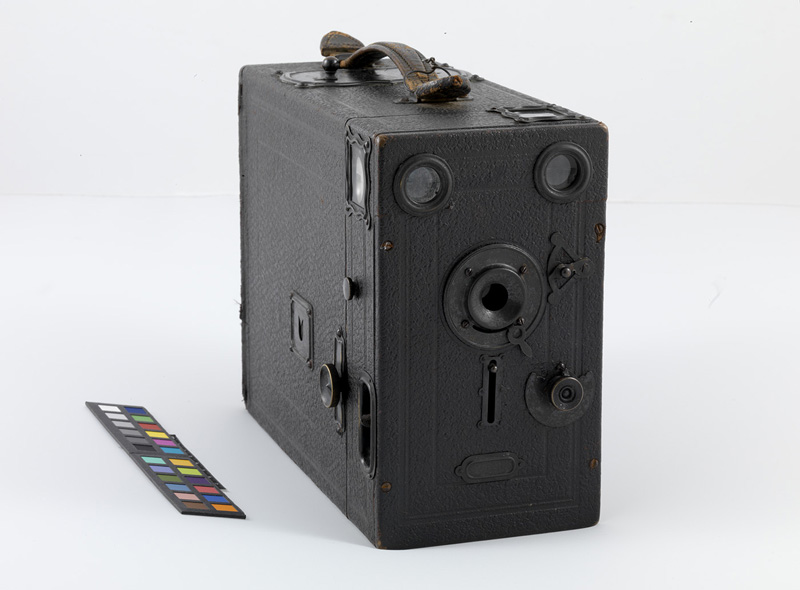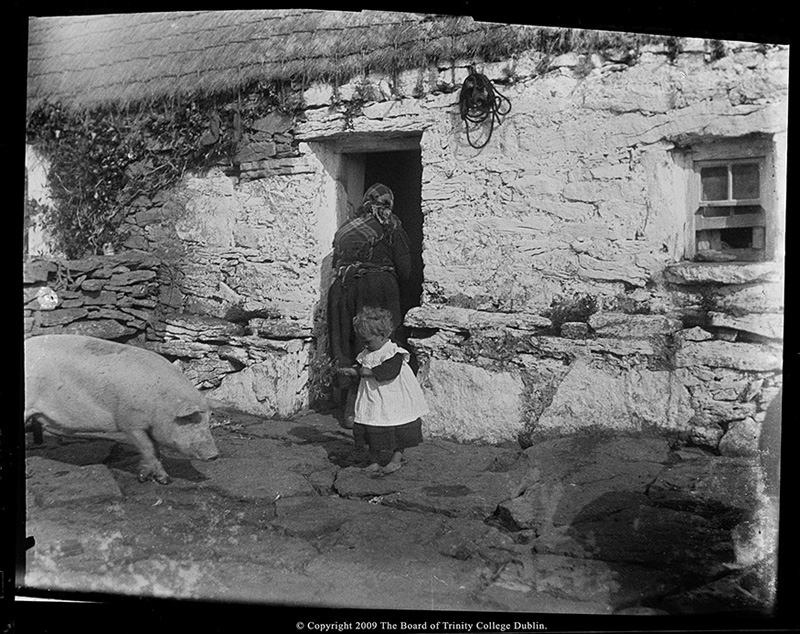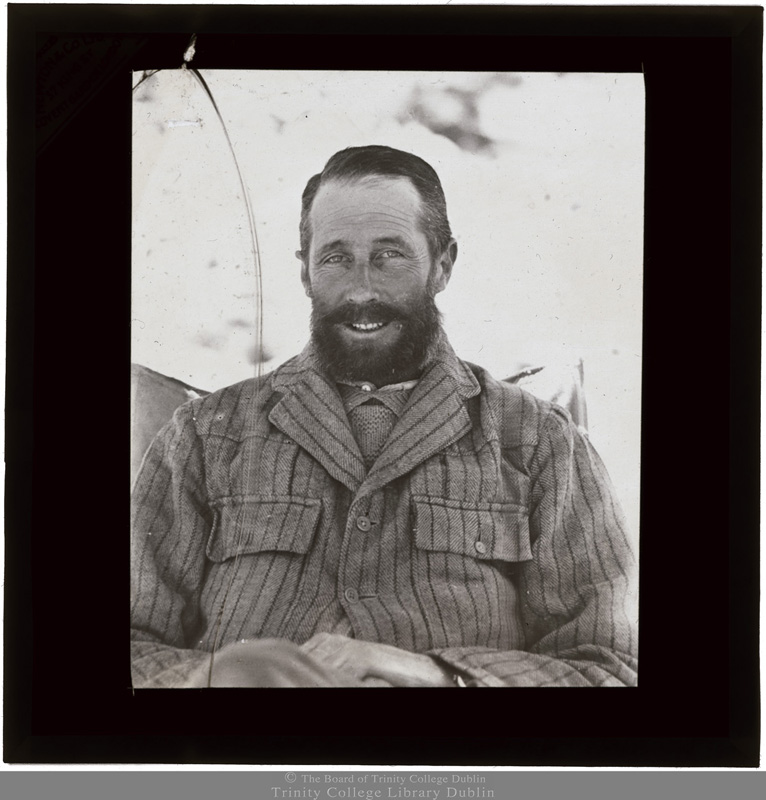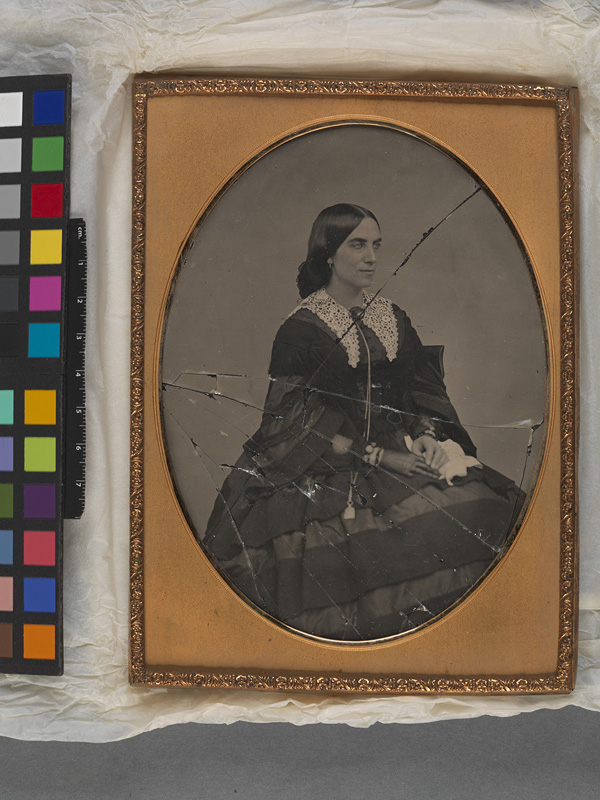Why are photographs special?
Libraries typically contain large collections of photographs, including rare examples of early techniques, vulnerable items such as glass-plate and nitrate negatives, and many types of positive print.
The chemical processes used to create photographic images make them particularly susceptible to damage. Uncontrolled light exposure can cause fading and irretrievable image loss. Pollution can cause silver tarnish, colour change and staining; and constant handling can result in broken glass, torn supports and fingerprint damage.
The conservator's first step is to identify the photographic process, and determine whether treatment is required, or if preservation through stabilisation of light, temperature and humidity, and the implementation of safe handling and storage protocols will be sufficient.
The creation of surrogate digital images from the originals is one of the most useful actions to preserve photographic collections. The new images can then be handled, displayed and replicated without further risk.
J.M Synge's camera
The camera is called a Klito, a falling plate magazine model, manufactured by Houghtons of London. It would hold 8-12 sensitised glass plates, which were loaded onto the holder and exposed by a falling plate mechanism. At the front is the lens, shutter, and two viewfinders, one on the side for landscape format and the other on the top for vertical format. A focusing knob on the side exposes a bellows which, when turned clockwise, moves the front of the box forward, as is demonstrated here.
TCD Object Synge camera
J.M. Synge glass plate negative
c. 1898
This negative shows the McDonough cottage in which J. M. Synge stayed in Inismaan. Gelatin glass plate negatives were used by amateur photographers from the 1880's onwards; the plate is coated with a photosensitive gelatin emulsion which, once exposed, developed and fixed, is used to create a positive photographic print.
The emulsion layer is still intact although the plate is inherently fragile due to a crack radiating from the bottom corner. Replacing the glass could risk further damage; instead it is reinforced on each side with new glass, bound with paper binding tape. The young child wearing a pinafore is a boy dressed as a girl according to island custom to prevent his being stolen by the fairies.
MS 11332/37
photographic print of MS 11332/37
Lovell Reeve (ed.), The Stereoscopic Magazine
London, 1858
Stereoscopic albumen prints in contemporary 19th- century half binding. These paired photographs show two slightly different images of the same view, attempting to replicate the view as seen by both eyes. When viewed through a stereoscope, the stereograph creates the illusion of depth. The opening selected shows Sackville Street, the General Post Office and Nelson's Pillar.
Gall.DD.22.1
Richard W Hingston (1887-1966)
Lantern slide from the collection of Richard W Hingston depicting a member of the 1924 British Mount Everest Expedition with which Hingston travelled as expedition doctor.
Lantern slides are transparent positive images on glass, and are viewed by projecting light through them. The original cover glass had shattered and has been replaced. A crack running from the top left corner has damaged the emulsion layer but to replace it could cause further damage: instead it is reinforced with new glass supports bound with paper binding tape.
MS 10484/4/27
photographic print of MS 10484/4/27
Ambrotype portrait by John Burke of Julia Anna Maria Georgina Joly (born the Comtesse de Lusi), mother of geologist John Joly
1858
The ambrotype consists of a negative emulsion painted on glass, which has been underexposed and chemically treated so that the image appears whitish rather than the dark black usually associated with negatives. A dark background is placed or painted on the back of the glass so that the image appears positive. Poor handling has caused irreversible damage to the glass primary support. The image is attached to the broken glass, and cannot be removed. A new glass support has been placed on the recto and a supporting card on the verso to stabilise the item.
MS 4695





